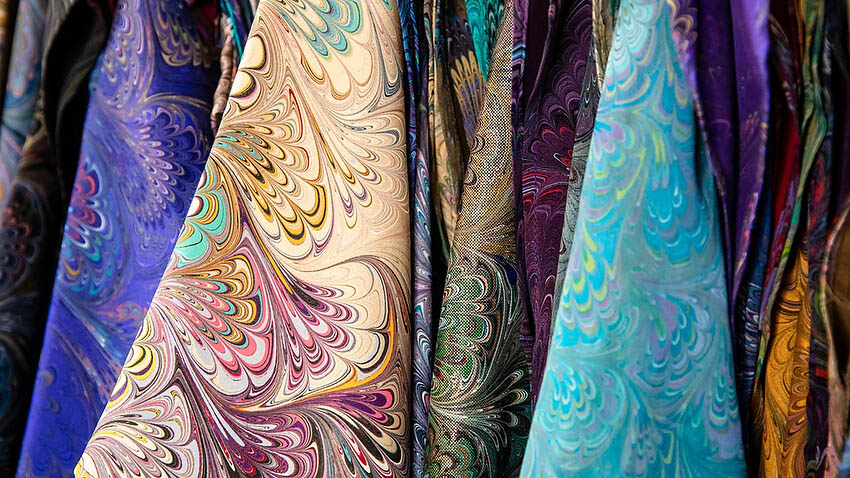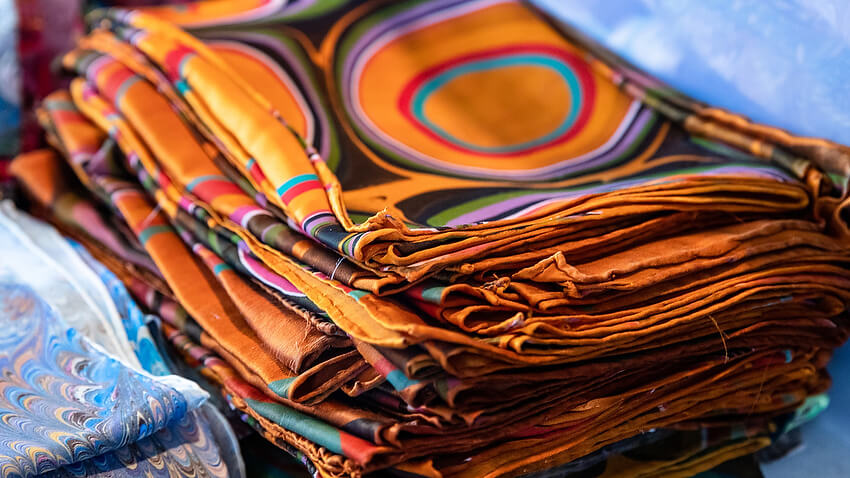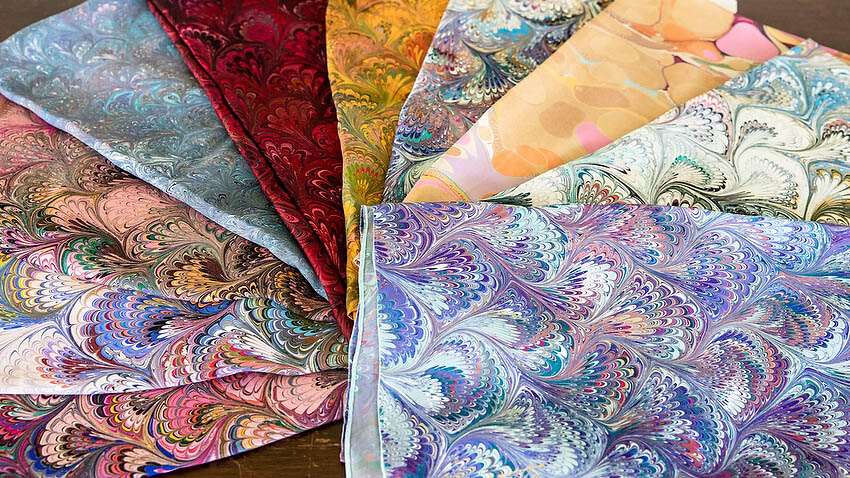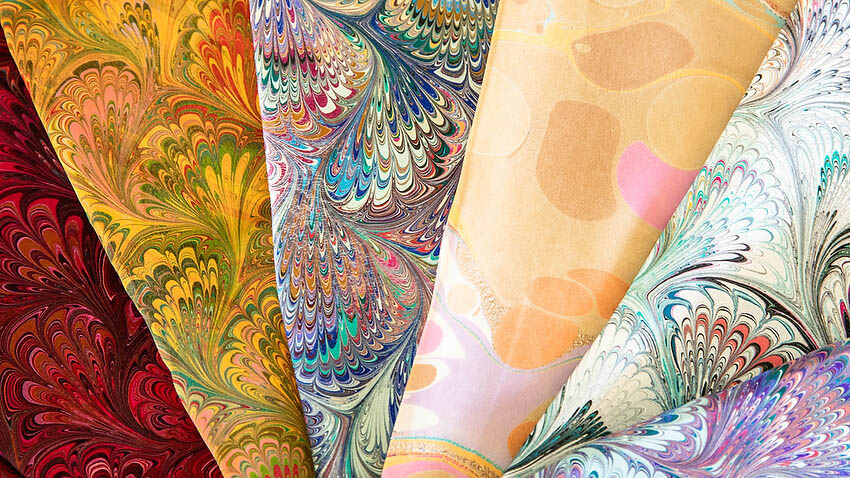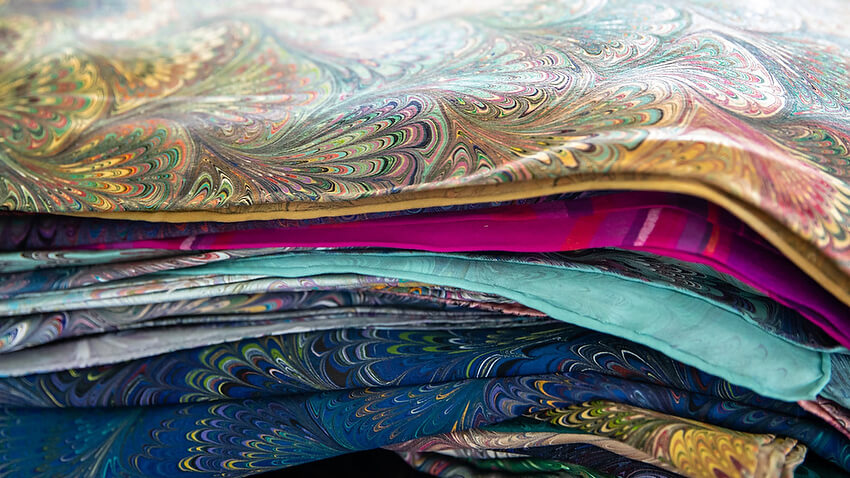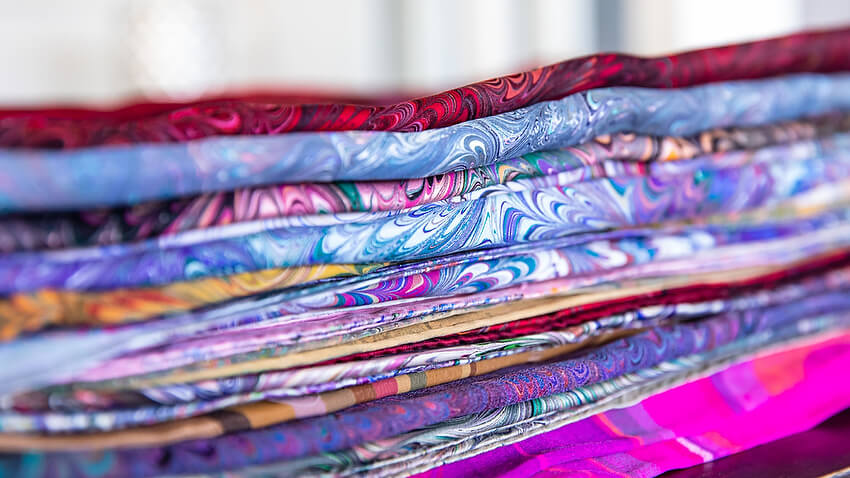Bursting at the seams: Treasured handmade fabric collection gifted to ACC Fashion Incubator
Cosette Russell was known for her fabric marbling techniques.
“Her work was displayed and sold at the Supreme Court gift shop and in the Smithsonian Museum Store Catalogue,” says Aysha White, Russell’s daughter. “She would want it to go to a greater good.”
When Russell passed away in July 2017 she left behind an immense collection of scarves, ties, vests, and sheets of fabric. It was all split among her three children.
“Finding the right way to market her pieces, and sell them, would be hard. We decided it should all go somewhere where it would be valued,” says White.
When White and her siblings were coming up with a plan for the fabric, they turned to a family friend, Chef Stephanie Herrington, ACC Culinary Program department chair. Herrington, in turn, connected the sisters with the ACC Fashion Incubator.
“I was in a meeting and sitting across from Nina Means (ACC Fashion Incubator director), and I had a light-bulb moment,” says Herrington. “I think they have a good avenue with ACC and pop-up sales.”
When Means met the family, they took her to see just how much material was available.
“They opened this garage, and I saw just how beautiful it was,” says Means. “I felt like this was my Scrooge McDuck money vault, and I just wanted to dive in. It’s incredibly delicate, and well done, and when you see it up close, it is amazing. She was a master.”
“At home, my mom was always immersed in her work. If we were ever looking for her, she would be in her studio with a cup of coffee. She never took a break. She loved it,” says Laurie Painter, White’s sister.
Russell’s artistry is something that was rarely showcased.
“My mom would tell us when she was about seven or eight, a teacher criticized her artwork,” says White. “It was always in the back of her head that she couldn’t do art very well. Our dad was always behind her as an artist. Anything that she wanted to do he was like ‘Go ahead and do it, especially if it makes you feel good,’” says White.
White remembers her mother taking over the kitchen to make her materials. The more she worked, the more her children say she was onto something.
“When she started going to shows, it confirmed she was a true artist. People loved her work. It’s one thing when you feel good about what you are doing. It’s something else when someone pays for your work,” says Painter.
As the years went on, Russell’s artwork evolved.
“She saw marbling and that clicked with her,” says White. “At the time, there was no one to teach classes, so she had to read a lot of books and try different techniques to learn how to get the color on fabric and not wash off. Once she found the perfect formula, she went whole hog. She needed something to fit the large bolts of fabric she was working on, so she had a special bath made of metal that was about ten-feet-by-six-feet long,” says White.
Russell’s hand-dyeing and marbling techniques didn’t go unnoticed. Aside from being featured at the Supreme Court, it was on display at local art galleries and sold through the Chicago Institute of Art and Boston Museum. She became a fixture at the Houston International Quilt show, and held a booth for decades at the Armadillo Christmas Bazaar, then known as the Dickens Festival.
Her fabrics are now finding a home at the ACC Fashion Incubator.
“We are over the moon for our students to have access to something like this. It is just so hard to find. This isn’t something you could walk into a store to get. The closest place here is Dallas, or order from Los Angeles or New York,” says Means.
The fabric will be available to students, staff, and faculty through a pop-up sale on Friday, November 8.
“We want to give my mother’s work to someone who would value what she did,” says Painter. “It is important. It is appreciated.”
For more information, visit austincc.edu/fashionincubator
